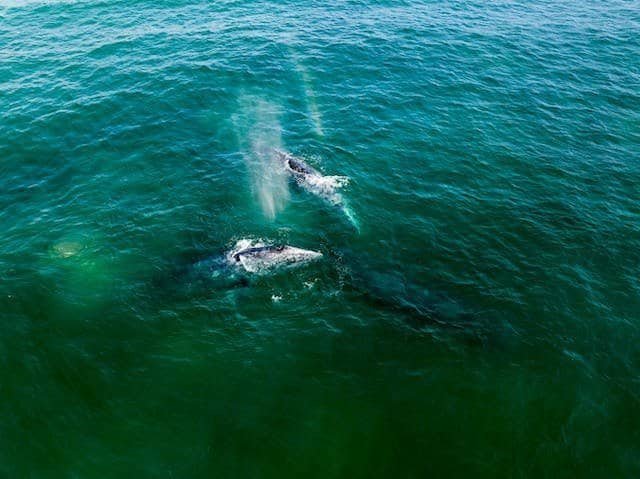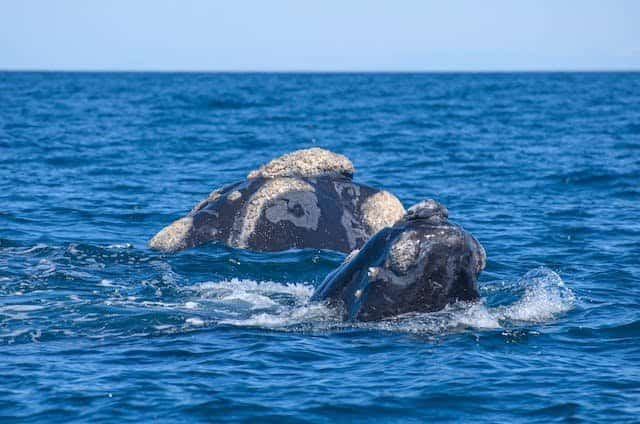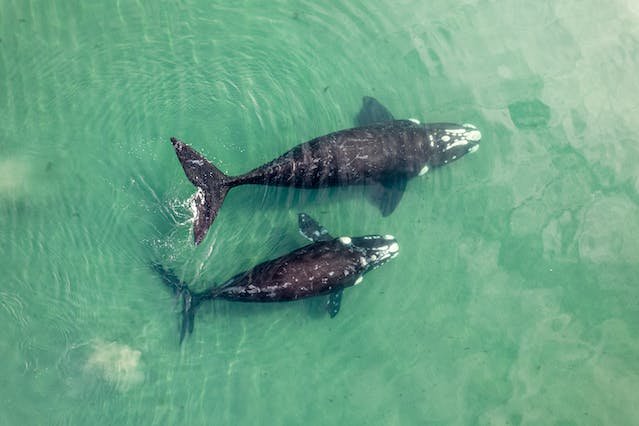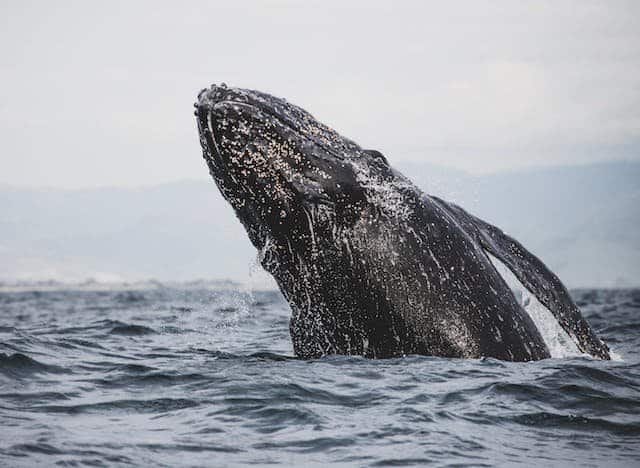Have you ever wondered that How Many Gray Whales Are Left In The World? The most recent estimate of the population of Gray Whales is 14526. Thanks to conservation efforts, the population of gray whales has been steadily increasing over the years.
The name “devil fish” comes from the fact that gray whales get angry when they are harpooned.
Table of Contents
Threats to Gray Whales
Despite the efforts to protect and conserve their population, gray whales still face various threats that put their survival at risk. These threats include:
- Entanglement in fishing gear
- Ship strikes
- Pollution
- Habitat degradation
Climate change is also a major threat to their survival as it affects their food sources and disrupts their migration patterns.
Appearance of Gray Whales:

When fully grown, these big whales can be 49 feet long and weigh 90,000 pounds. The females are a little bigger than the boys. Gray whales have spots on their bodies, and their small eyes are right above the corners of their mouths. Their chest fins are wide, shaped like paddles, and end in points.
They don’t have a dorsal fin; instead, they have a hump on the back of their bodies about two-thirds of the way back. There are also six to twelve small bumps, called “knuckles,” between the hump and the tail flukes. Its tail flukes are almost 10 feet wide, have S-shaped tips at the ends, and a deep notch in the middle.
For the most part, calves are born dark gray and get lighter as they age, turning brownish-gray or light gray. All gray whales have spots of lighter color on their bodies. They have barnacles and whale lice, also known as cyamids, all over their bodies, with more on their heads and tails.
Behavior and Ecology:
The species makes well-documented yearly migrations up and down the state’s coast and beyond, from the warm, shallow waters of Mexico to the nutrient-rich waters of Alaska. During their 19,300-kilometer (12,000-mile) trip, gray whales are often spotted from shore, making them a favorite of whale-watching companies. They are easily identified by their dark gray color, lumpy back, heart-shaped spout, and missing dorsal fin. They grow up to 15 meters (49 feet) long.
Gray whales, also known as the California gray whale or the Pacific gray whale, are a species of baleen whales that can be found in the Eastern North Pacific Ocean. These majestic creatures are known for their annual migration from the cold waters of Alaska to the warm lagoons of Baja California, Mexico.
Lifespan and reproduction:

Between the ages of 6 and 12, gray whales are sexually mature. On average, they are mature at 8 to 9 years old. Women have one calf after being pregnant for 12 to 13 months. Calves that are just born are about 14 to 16 feet long and weigh around 2,000 pounds. It is unknown how long gray whales live on average or at their longest, but one female was thought to have been 75 to 80 years old when she died.
What do Gray Whales eat:
Gray whales are known to eat many different kinds of foods. They are experts at feeding on the bottom, mainly amphipods, which are small creatures that look like shrimp and live in tubes in the mud. They also eat other creatures that live in mud, like tube worms and mollusks.
To get food, whales drink water and mud and use their broom-like baleen plates to sort food pieces. Then, they use their tongues to scrape food off the baleen and push the extra water and mud back into the ocean.
Importance of Protecting Gray Whales

Gray whales are not only important for maintaining a healthy marine ecosystem but they also hold cultural significance for many indigenous communities. Their annual migration is also a popular tourist attraction, bringing in economic benefits to local communities.
Recovery Efforts For How Many Gray Whales Are Left In The World
Gray whales were declared an endangered species in 1970 and since then, there have been significant efforts to protect and conserve their population. The International Whaling Commission banned commercial hunting of gray whales in 1947 and this has greatly contributed to their conservation. Other efforts include:
- Establishment of protected areas and marine reserves
- Monitoring and research programs to better understand their population dynamics
- Collaboration with local communities to reduce human impacts on gray whales
What we can do to protect gray whales
Supporting organizations and initiatives dedicated to protecting gray whales
- Reducing our carbon footprint and making sustainable choices
- Properly disposing of trash and reducing plastic usage to prevent pollution in the ocean
- Respecting their natural habitat and following whale watching guidelines to avoid disturbing their behaviors
- Raising awareness and educating others about the importance of conservation efforts for gray whales.
By working together, we can ensure that these magnificent creatures continue to thrive in our ocean for generations to come.
Read Also: How Many Fin Whales Are Left In The World?





